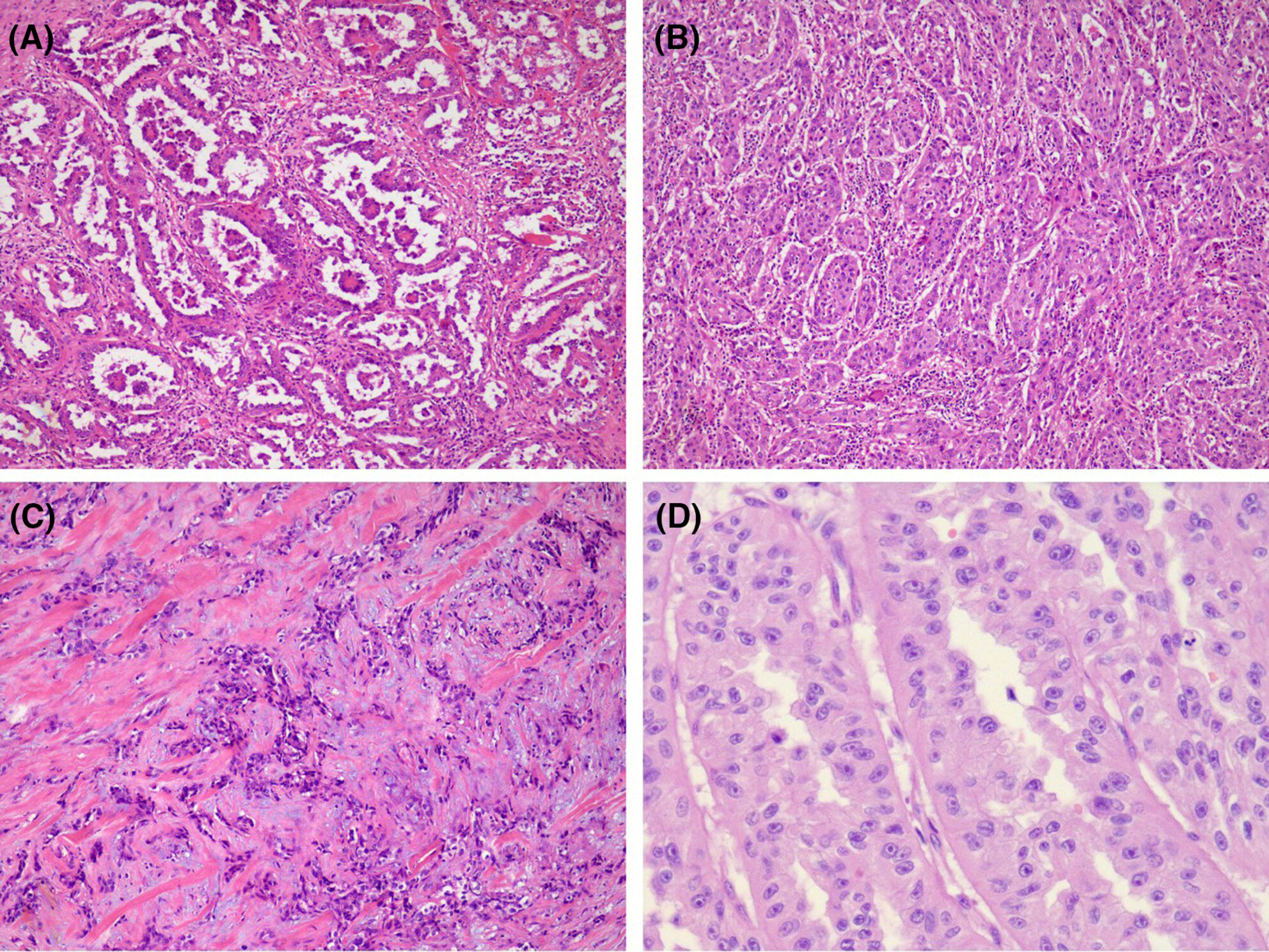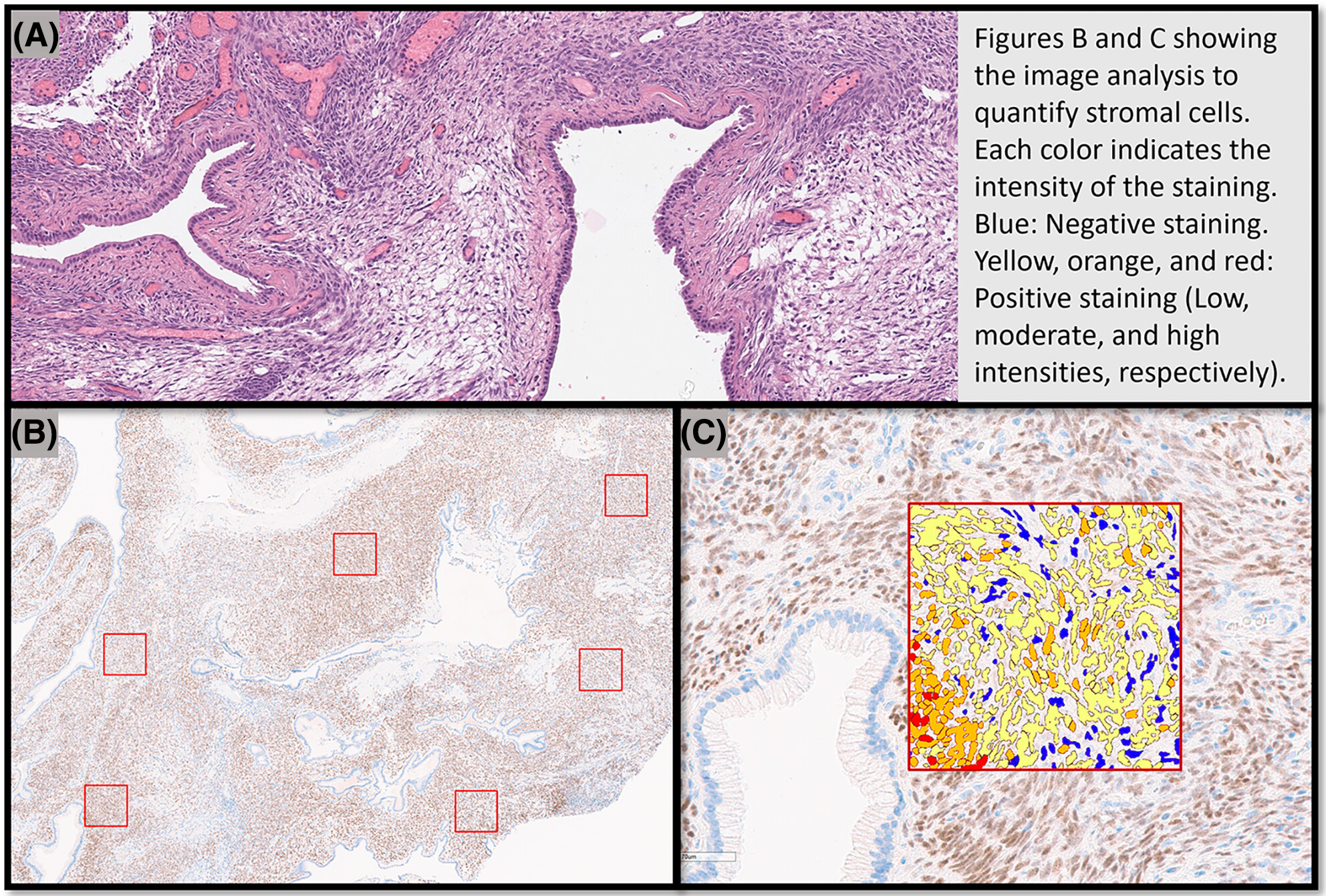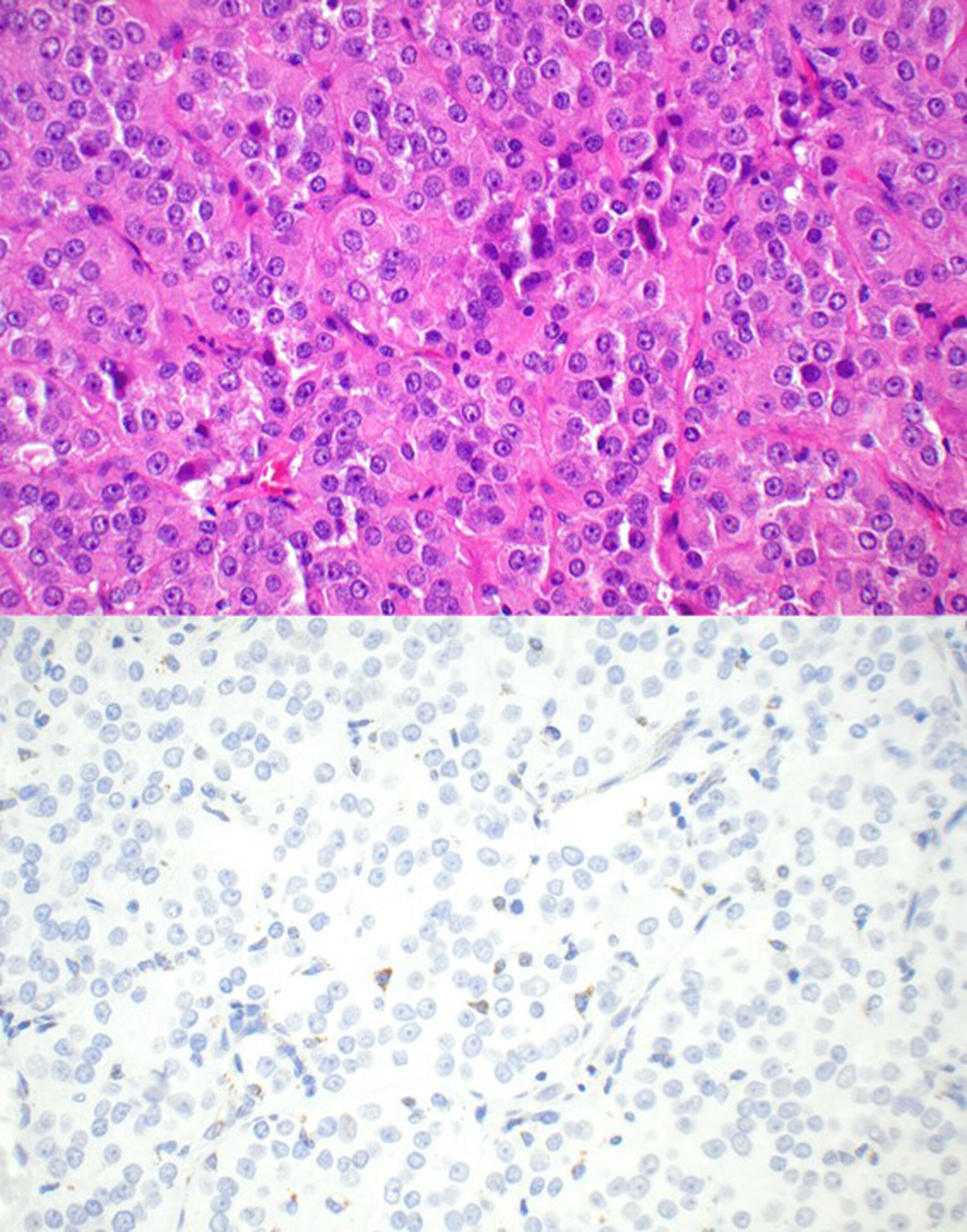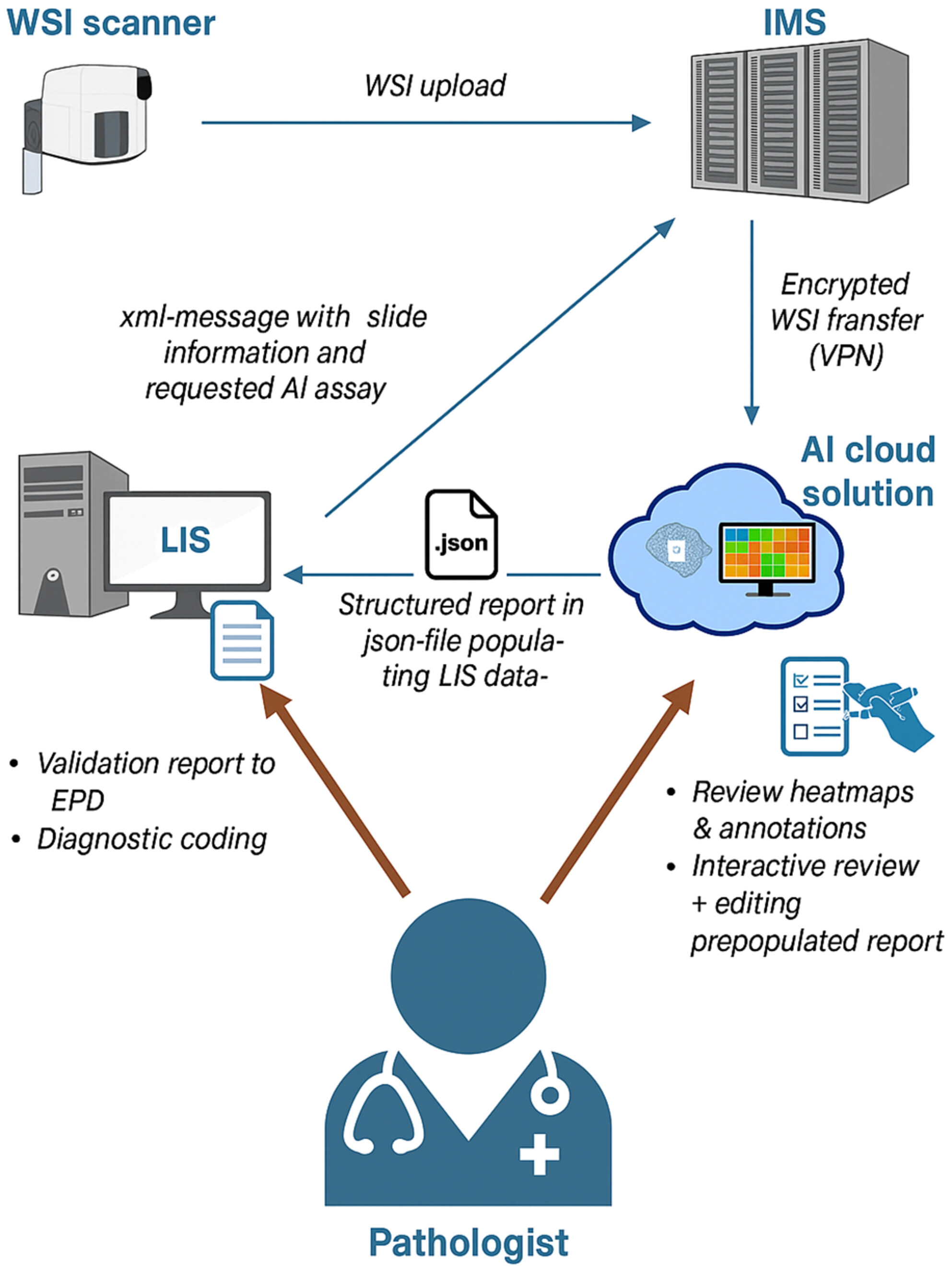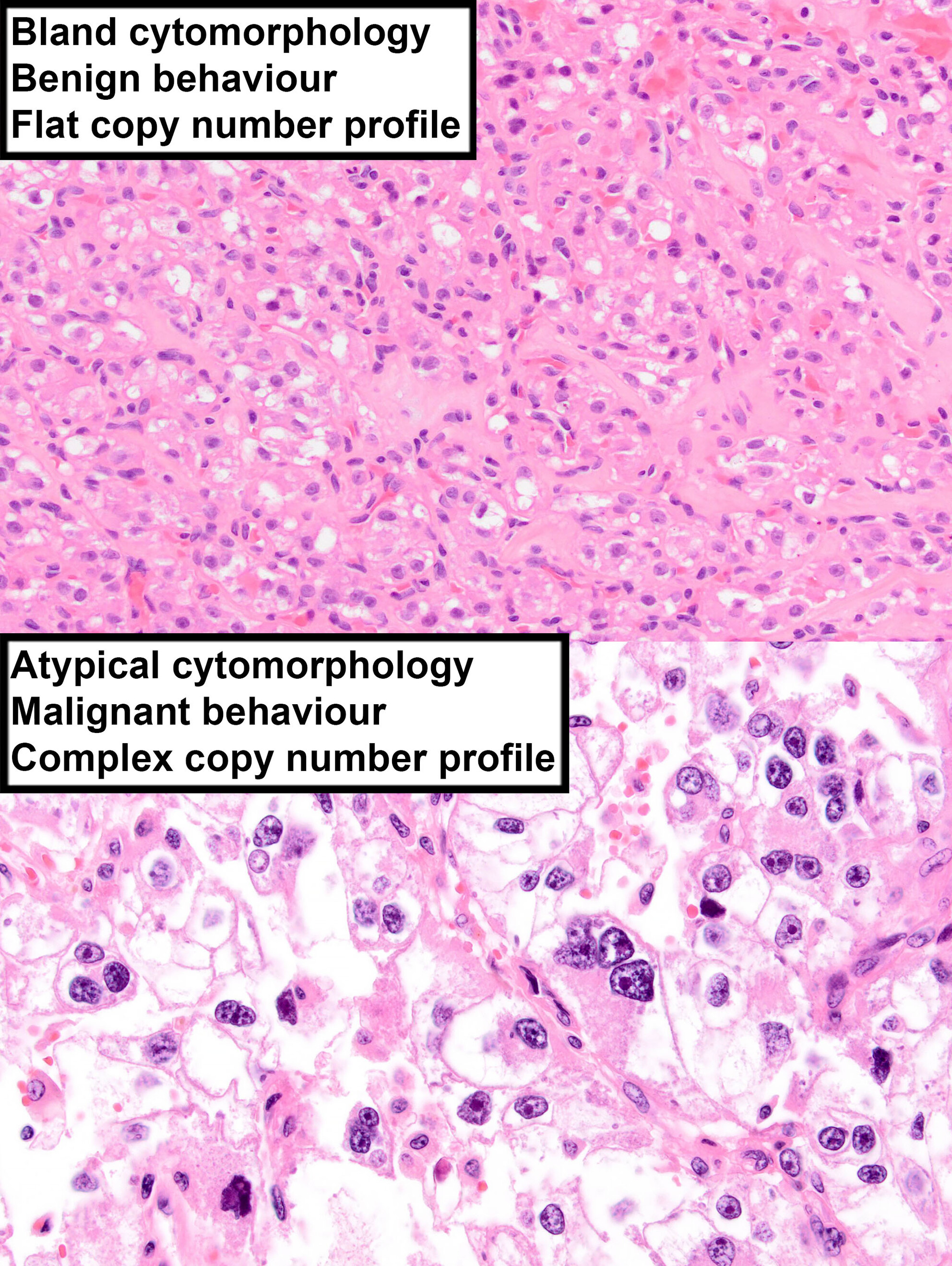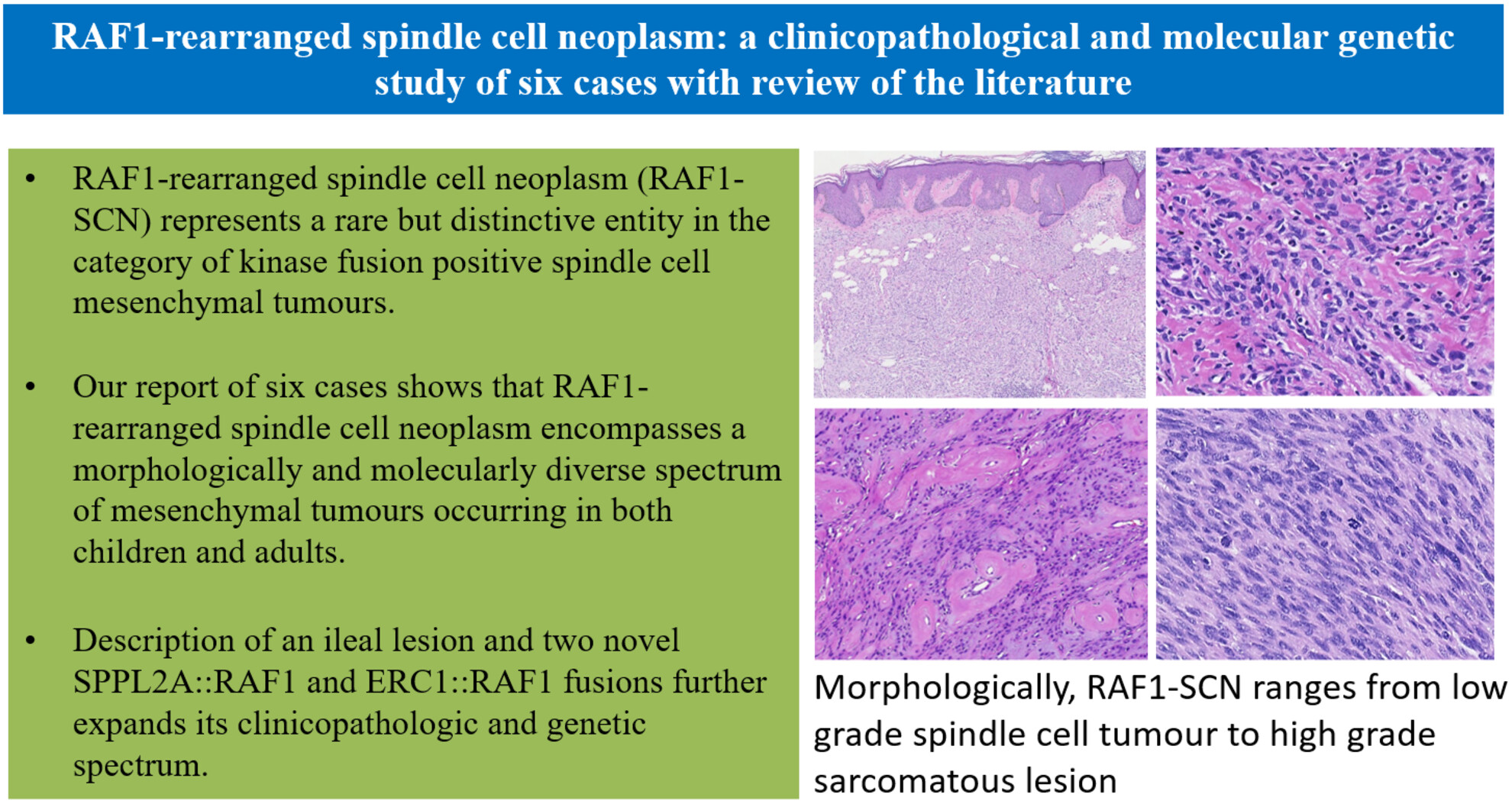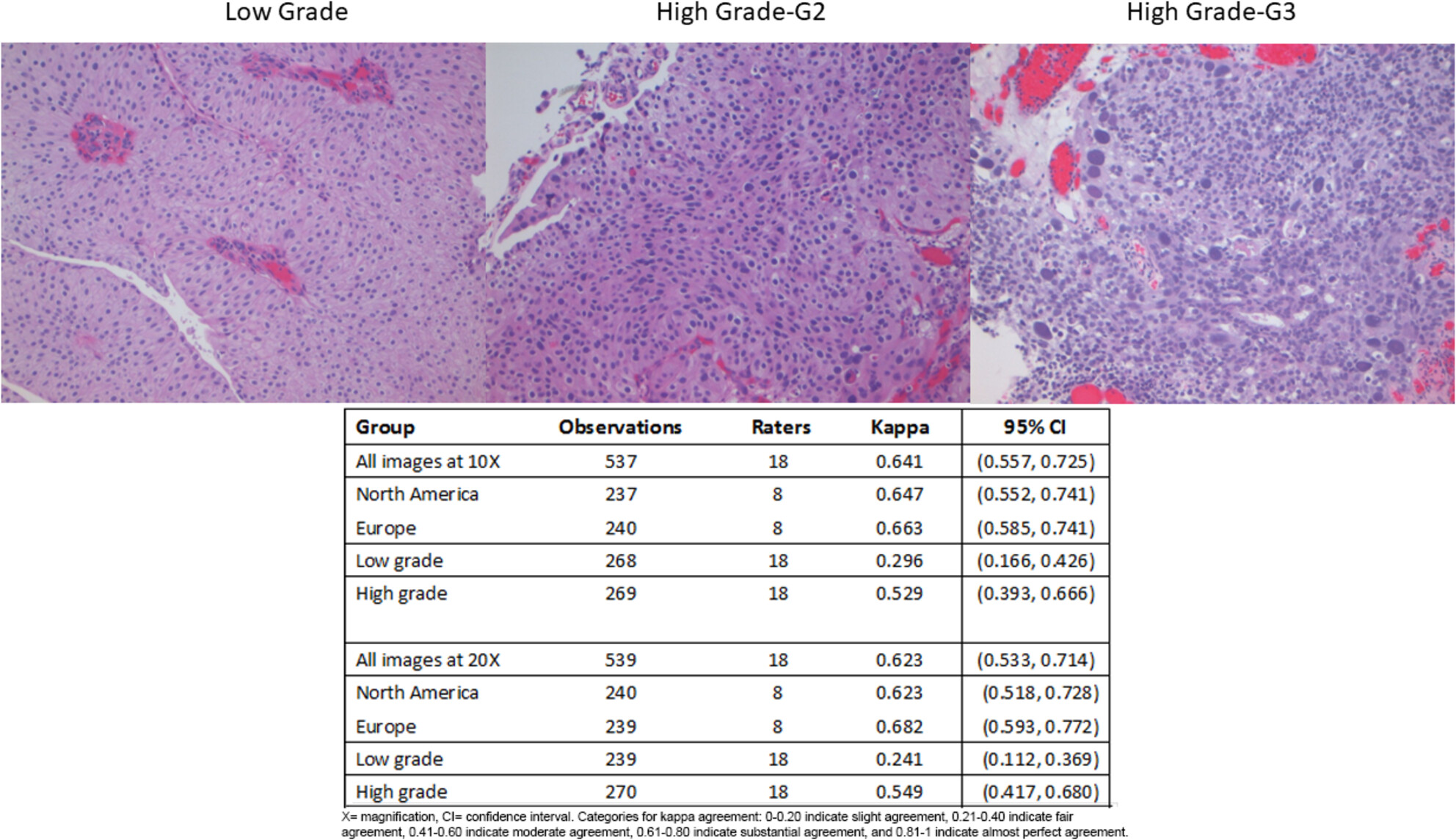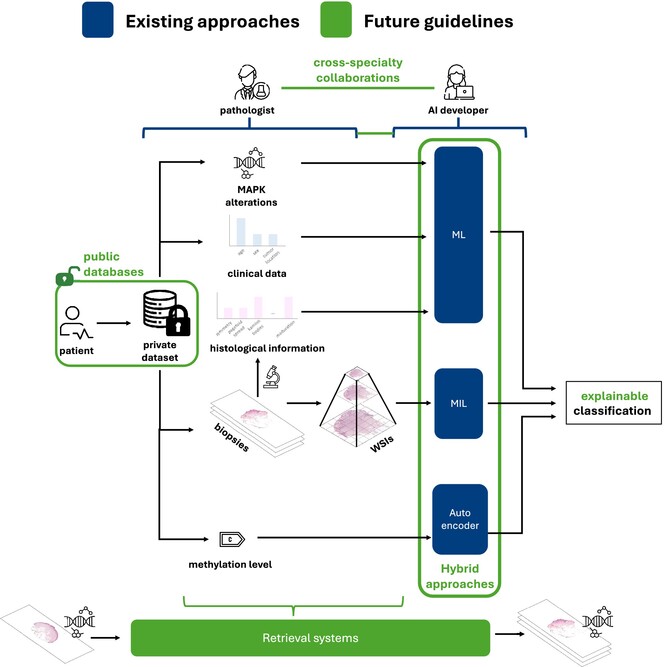Journal list menu
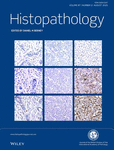 Issue
IssueEarly View
Online Version of Record before inclusion in an issue
Export Citations
Download PDFs
Correspondence
Blastic plasmacytoid dendritic cell neoplasm (BPDCN) and mature plasmacytoid dendritic cell proliferation (MPDCP): the same cell of origin from a clonal haematopoiesis of indeterminate potential (CHIP)?
- Version of Record online: 29 July 2025
Original Article
Dynamic nature of hepatic differentiation in lung adenocarcinoma
- Version of Record online: 29 July 2025

We retrospectively analysed hepatic differentiation in lung adenocarcinomas characterized by cytoplasmic TTF-1 and Hep-Par1 expression. Hepatic differentiation was a rare event (0.1%) and the phenotypic change was associated with disease progression and/or therapy, suggesting a dynamic nature of hepatic differentiation in lung adenocarcinoma. Created with BioRender.com.
Interobserver variability in the histologic evaluation of serrated epithelial change in inflammatory bowel disease among gastrointestinal pathologists: a comparison of two different definitions
- Version of Record online: 24 July 2025

There are no standardized histologic criteria for diagnosing serrated epithelial change in inflammatory bowel disease, but two commonly used definitions are currently in use. The diagnosis of serrated epithelial change using the first definition (DEF1) is significantly more reproducible than using the second definition (DEF2).
Mycophenolate mofetil-induced colitis versus colonic graft-versus-host disease: a comparative histologic study with artificial intelligence model development
- Version of Record online: 24 July 2025
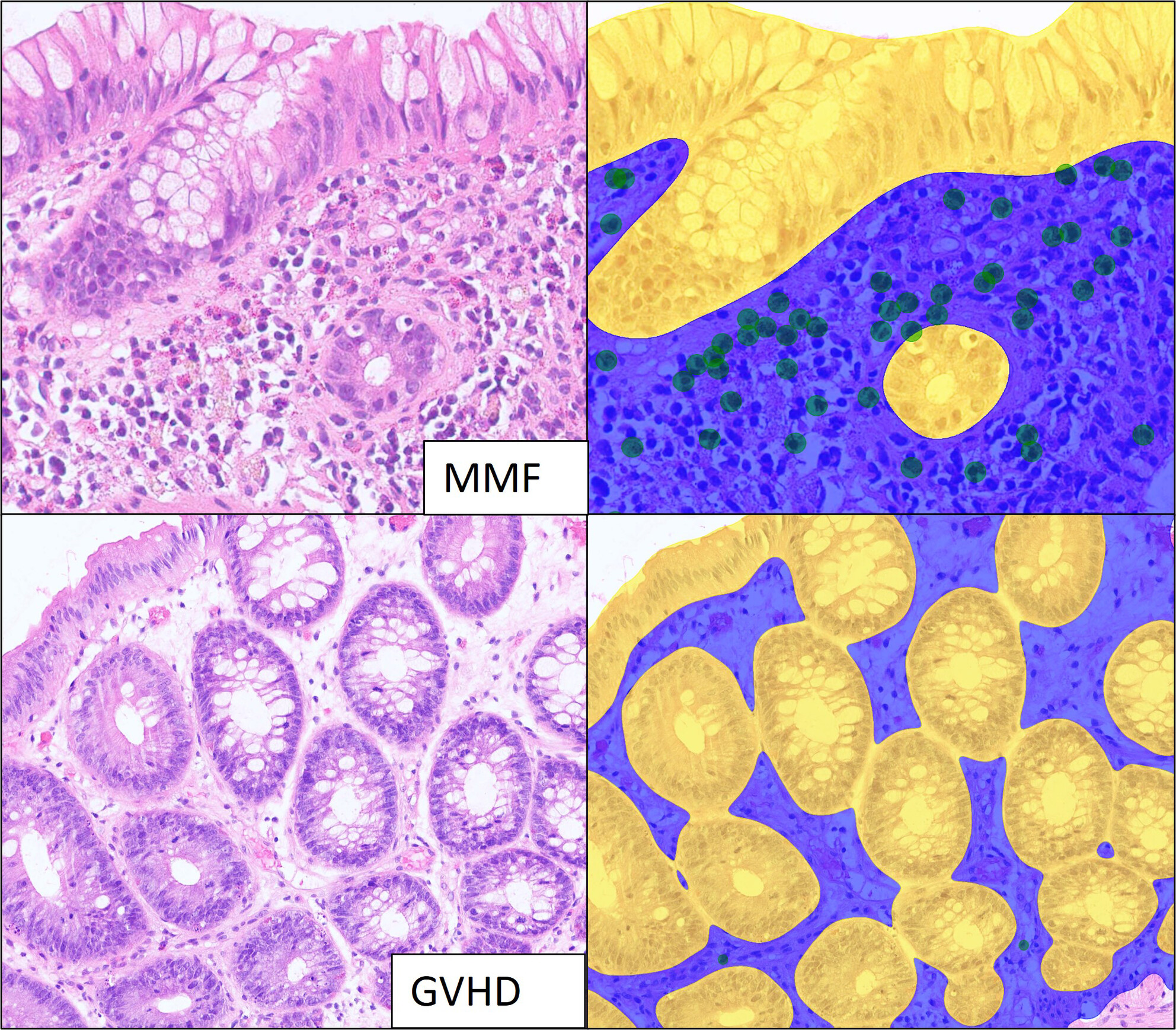
Mycophenolate-induced colitis and graft-versus-host disease (GVHD) colitis have overlapping histology. Lower eosinophil counts, higher apoptotic counts and neuroendocrine cell aggregates are histological features that favour the diagnosis of GVHD. AI models for eosinophil quantification may serve as an ancillary tool for assessing this differential diagnosis.
A reappraisal of oesophageal mucosal biopsy specimens showing sloughing
- Version of Record online: 21 July 2025
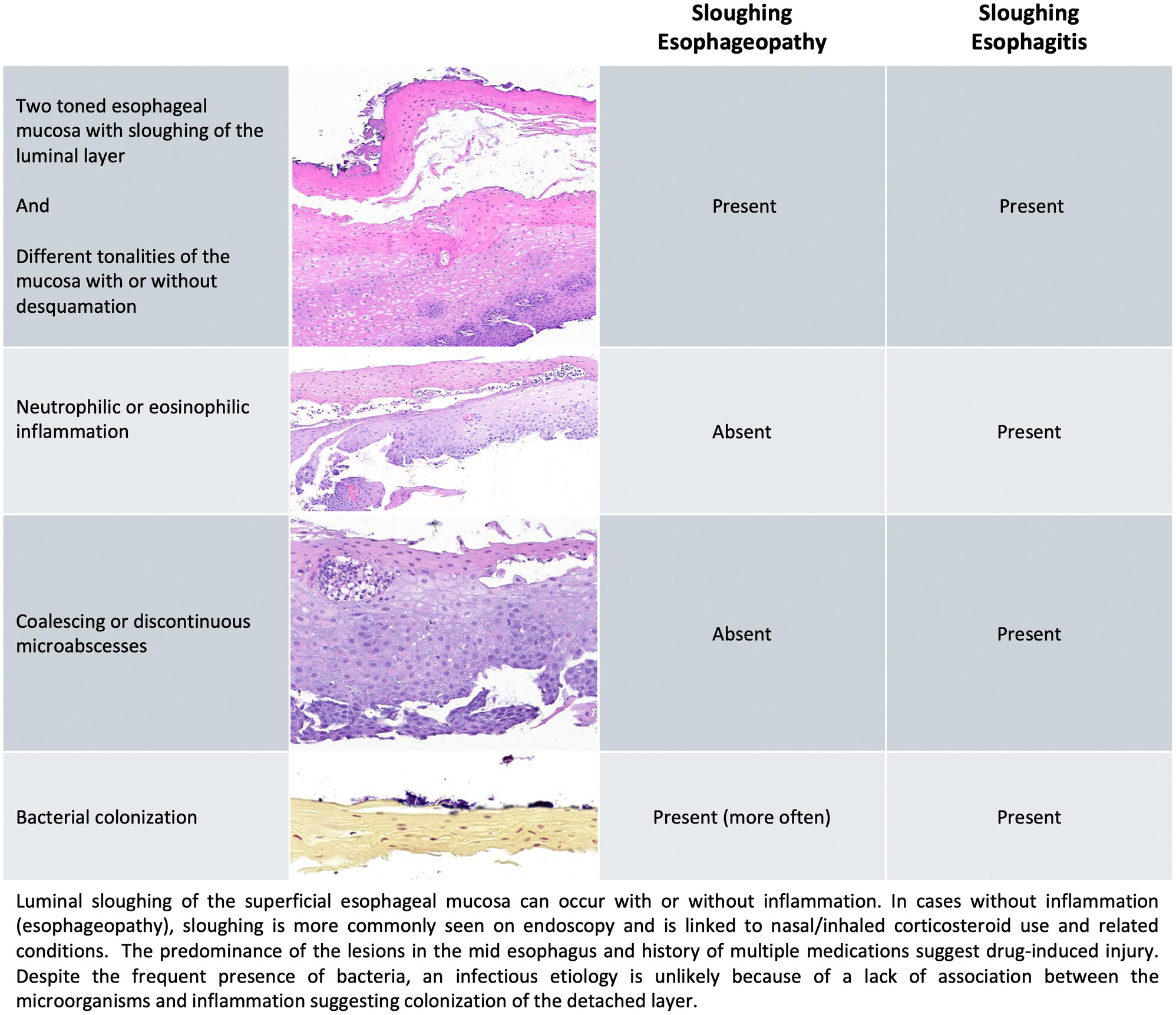
Luminal sloughing of the superficial oesophageal mucosa can occur with or without inflammation. In cases without inflammation (oesophageopathy), sloughing is more commonly seen on endoscopy and is linked to nasal/inhaled corticosteroid use and related conditions. The predominance of the lesions in the mid-oesophagus and history of multiple medications suggest drug-induced injury. Despite the frequent presence of bacteria, an infectious aetiology is unlikely because of a lack of association between the microorganisms and inflammation, suggesting colonization of the detached layer.
Short Report
Immunohistochemical characterization of peritoneal inclusion cysts with squamous metaplasia
- Version of Record online: 21 July 2025
Lesson of the Month
GATA3 positive spindle cell neoplasm involving the liver diagnosed as metastatic sarcomatoid chromophobe renal cell carcinoma at autopsy
- Version of Record online: 21 July 2025
Short Report
Loss of expression of STK11/LKB1 in intratubular large cell hyalinizing Sertoli cell neoplasm
- Version of Record online: 16 July 2025
Original Article
Merlin-deficient renal cell carcinoma often exhibits high-grade cytology, admixed architectural patterns, sclerotic and mucinous stroma, inflammatory infiltrates and calcifications
- Version of Record online: 14 July 2025
Osteolipomas revisited: a detailed clinical, histologic and molecular characterisation
- Version of Record online: 14 July 2025
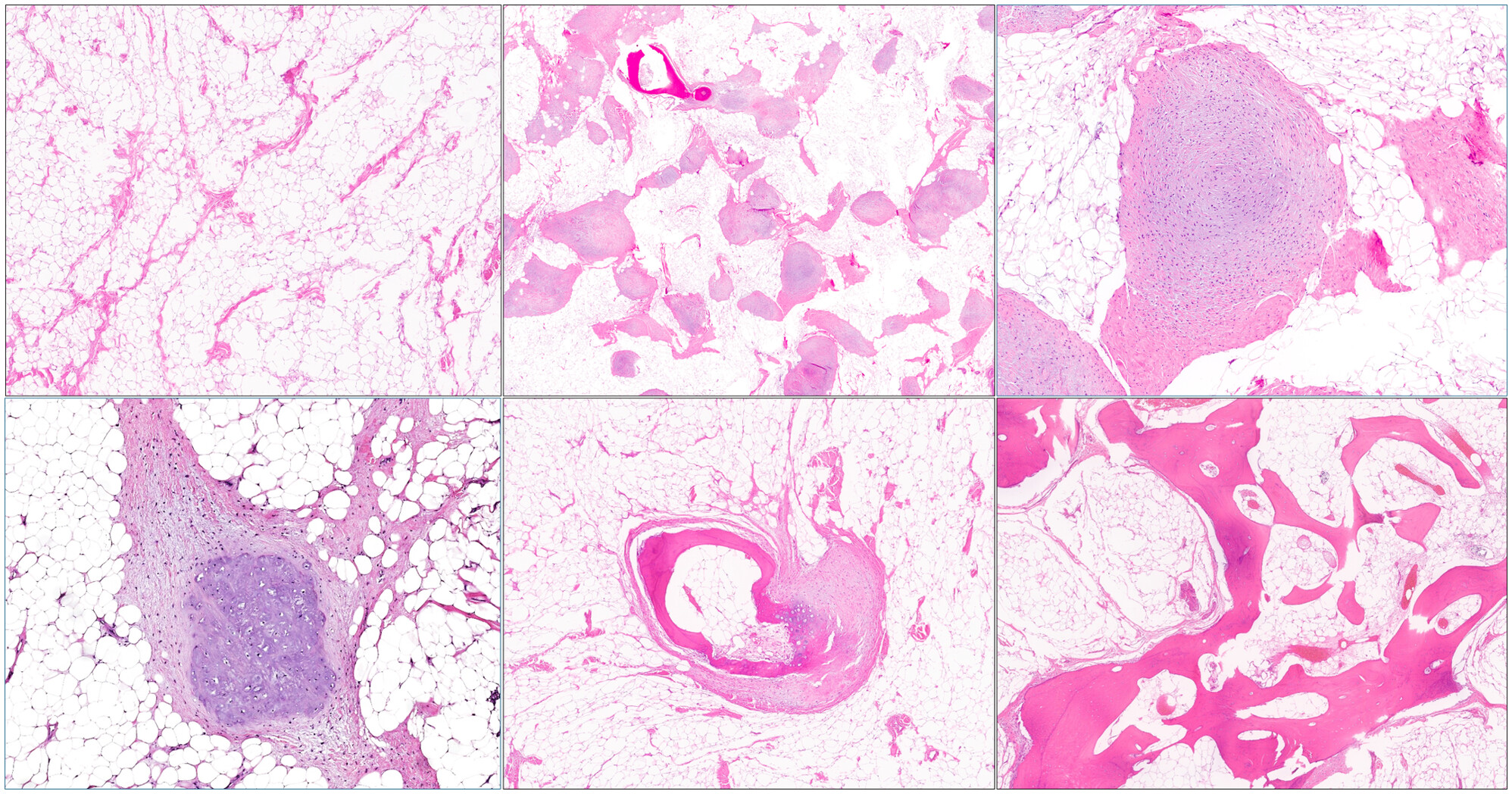
In this study, we provide a comprehensive analysis of 18 osteolipomas, including a detailed morphological assessment and molecular characterization of a subset of cases. Our findings strengthen the limited existing research supporting that osteolipomas are conventional lipomas undergoing secondary osseous metaplasia. The identification of recurrent HMGA2 fusions, including the novel HMGA2::PIK3R1, underscores their molecular similarity to conventional lipomas.
Lesson of the Month
Testicular adult granulosa cell tumour: discussing assessment of risk, microRNA-371a-3p levels and FOXL2 testing in a single case
- Version of Record online: 10 July 2025
Original Article
An international inter-rater agreement study in the challenging diagnosis of squamous dysplasia of the oesophagus
- Version of Record online: 08 July 2025
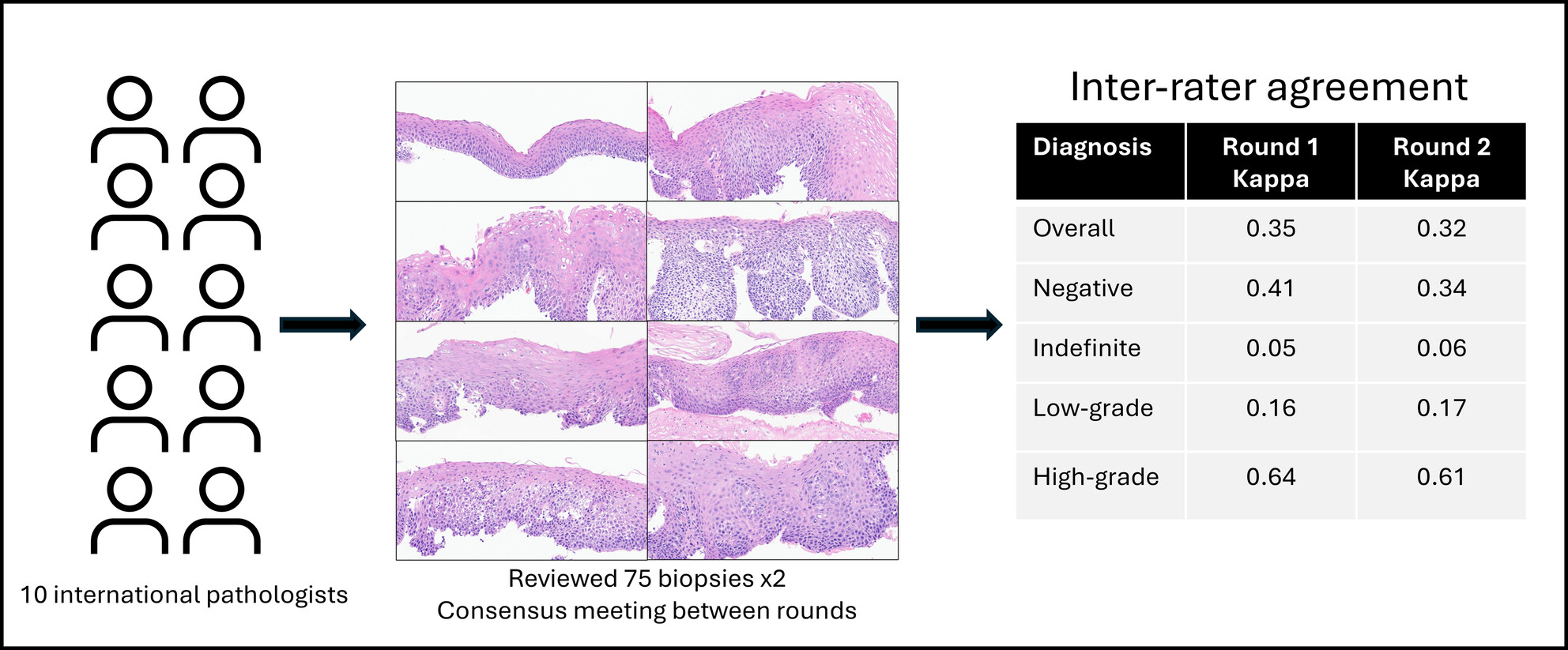
There is limited data on the inter-rater agreement in grading of oesophageal squamous dysplasia. Among an international group of 10 gastrointestinal pathologists, we demonstrate that overall inter-rater agreement is fair whereas agreement is good for high-grade dysplasia. These results should inform clinical guidelines for management of oesphageal squamous dysplasia.
Interobserver reproducibility of hilar soft tissue invasion in testicular germ cell tumours among genitourinary pathologists
- Version of Record online: 04 July 2025
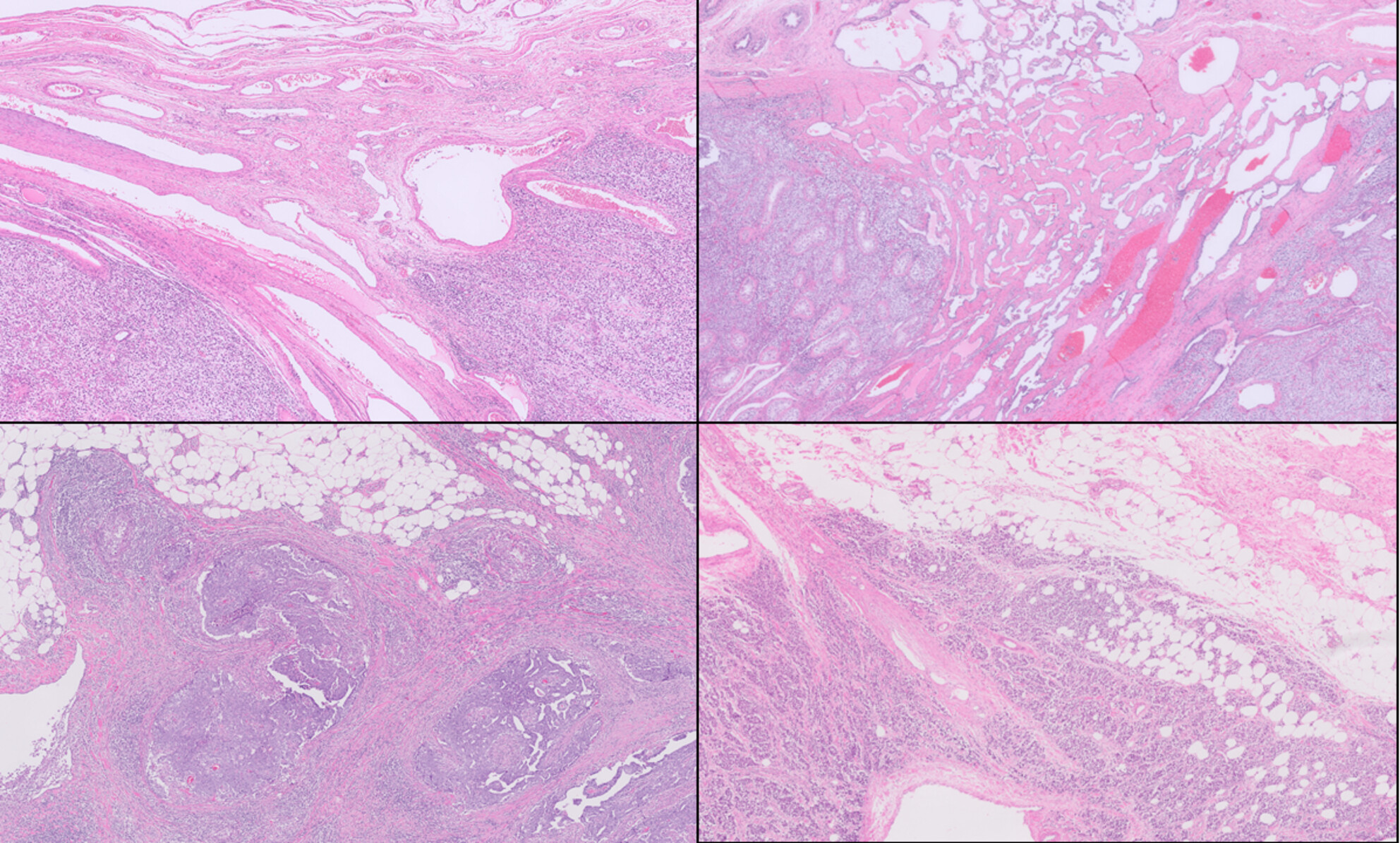
Hilar soft tissue invasion is a relatively novel pT2 staging parameter in testicular germ cell tumours. Some of the morphological features that can be used to identify HSTI includes invasion past beyond level parallel to or within prominent hilar vessels, invasion beyond level parallel to or within the rete, invasion beyond level parallel to hilar adipose tissue and tumour within (directly touching) hilar adipose tissue. Although a good consensus exists among genitourinary pathologists on HSTI assessment, clarifying the diagnostic guidelines with specific set of criteria included in pathologic staging systems should improve its diagnosis.
Stroma areactive invasion front areas (SARIFA) in 1,298 pT3/pT4 colorectal cancers: A strong prognostic parameter complementing established morphological criteria
- Version of Record online: 04 July 2025
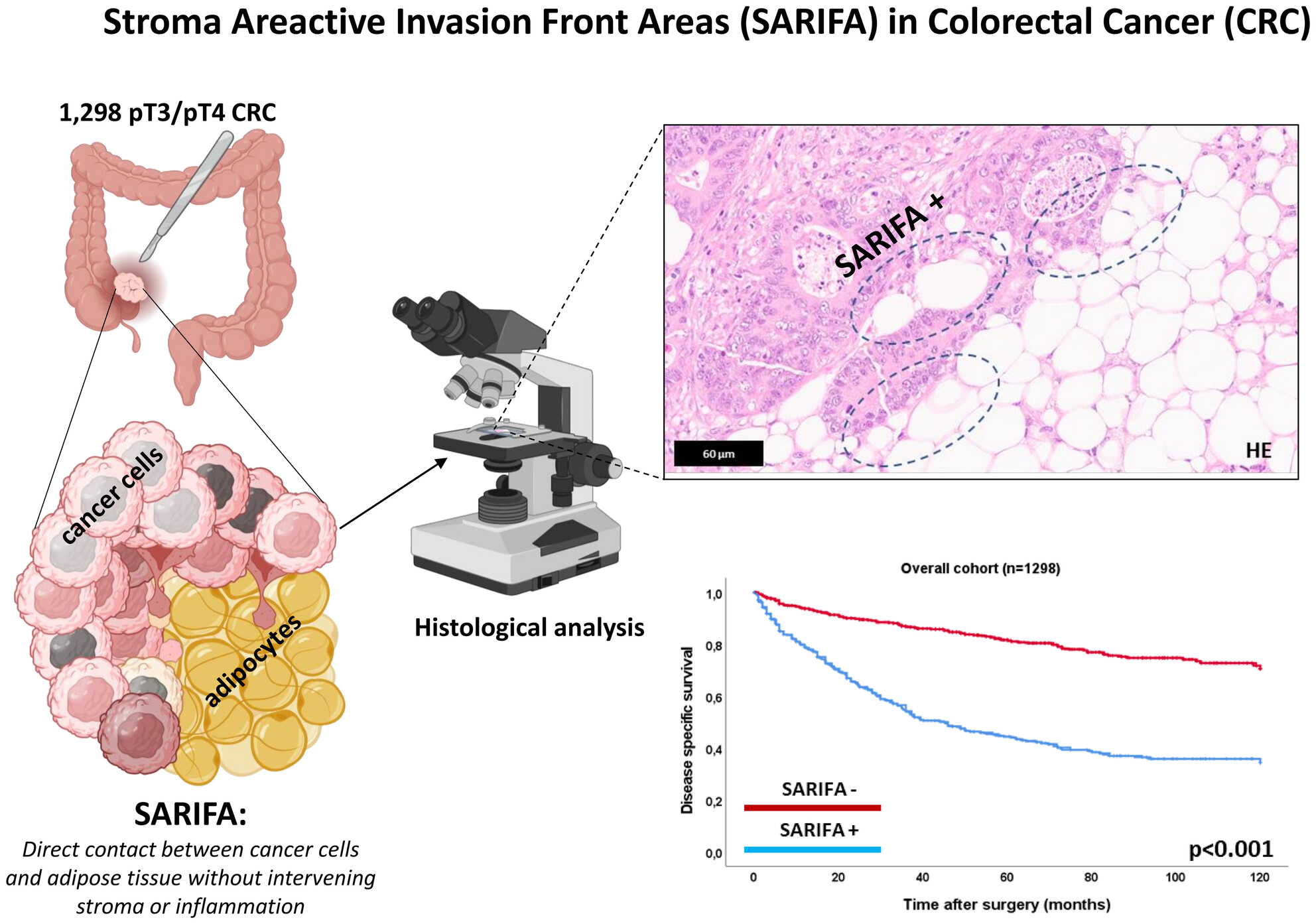
SARIFA is a novel, highly prognostic, stage-independent morphological parameter in CRC. It complements established histopathological prognostic markers and provides crucial additional prognostic information across key clinicopathological and morphological subgroups. Partially created in https://BioRender.com.
Comprehensive genomic profiling and immunohistochemical analysis of prepubertal-type testicular neuroendocrine tumours in postpubertal patients reveal a possible relationship with small intestinal neuroendocrine tumours
- Version of Record online: 04 July 2025

In this study, we assessed five cases of prepubertal-type testicular neuroendocrine tumours. On immunohistochemistry, we observed varying levels of positivity with CDX2 and SATB2 antibodies. Comprehensive genomic profiling of two cases identified chromosome 18 deletion and pathogenic CDKN1B mutation, previously described as characteristic of small intestinal neuroendocrine tumours. These findings indicate intestinal differentiation of these lesions.
A deep active learning framework for mitotic figure detection with minimal manual annotation and labelling
- Version of Record online: 03 July 2025
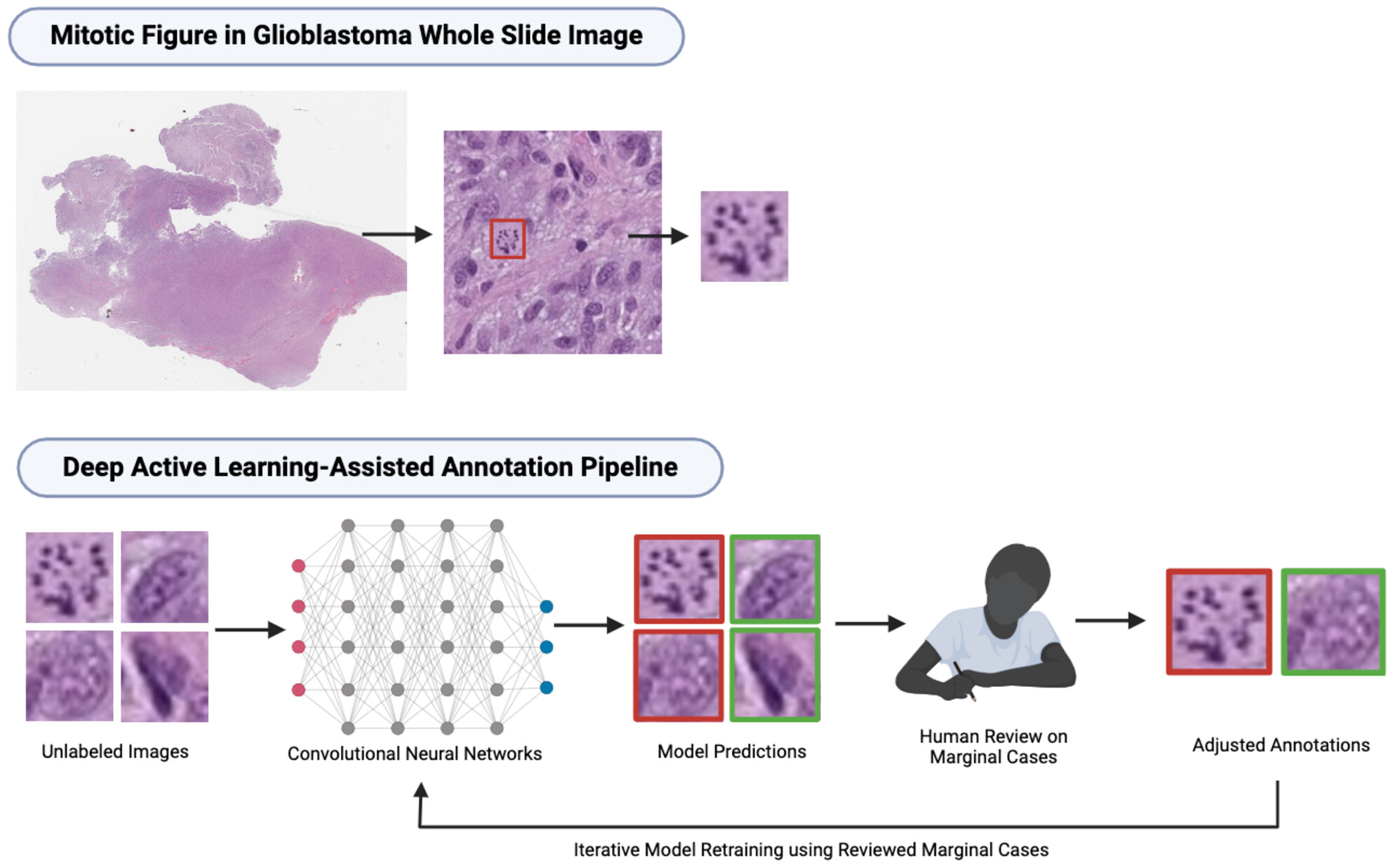
We propose a deep active learning framework for mitotic figure detection and classification in glioblastoma whole slide images. By iteratively selecting uncertain samples for expert review and model retraining, our approach achieves high accuracy while reducing annotation time by nearly 50%, demonstrating its potential for efficient cancer diagnosis.
Renal cell carcinoma with fibromyomatous stroma (RCC FMS) and with hemangioblastoma-like areas is part of the RCC FMS spectrum in patients with tuberous sclerosis complex
- Version of Record online: 01 July 2025
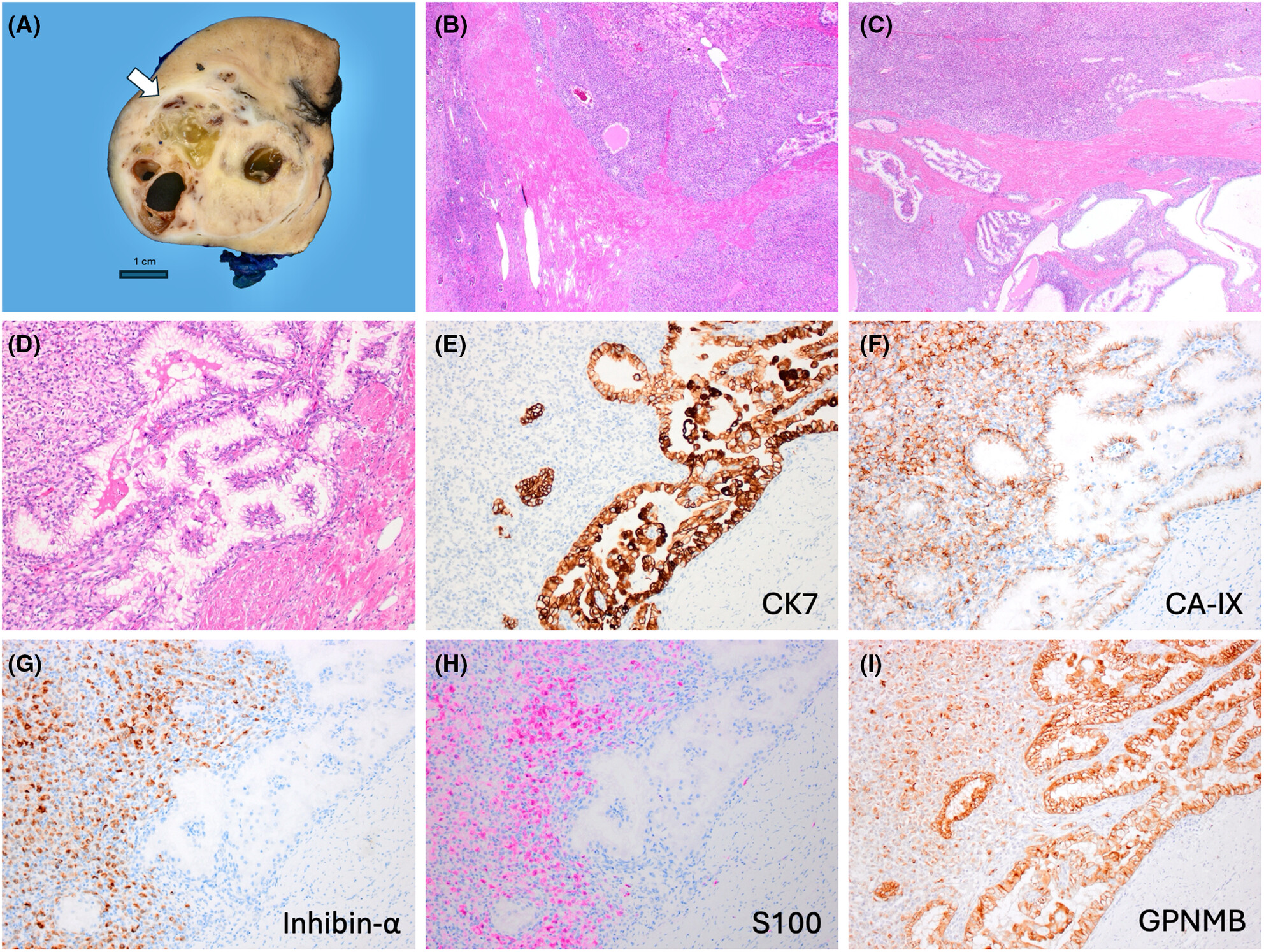
We report on three patients with Tuberous Sclerosis Complex (TSC) who had renal cell carcinomas with fibromyomatous stroma (RCC FMS), demonstrating a coexistent haemangioblastoma (HB)-like morphology. Our findings support the conclusion that HB-like features are part of the spectrum of RCC FMS with TSC/MTOR alterations.
Correspondence
Repetitive invasion does not preclude the possibility of invasive-type intraductal carcinoma of the prostate
- Version of Record online: 01 July 2025
Original Article
Loss of MTAP expression is not an accurate surrogate for CDKN2A homozygous deletions in peritoneal mesothelioma
- Version of Record online: 25 June 2025

MTAP immunohistochemistry (IHC) was evaluated as a diagnostic tool for peritoneal mesothelioma by comparing it with CDKN2A homozygous deletion (HD) detected by FISH. Results showed low concordance between MTAP IHC and CDKN2A HD, suggesting MTAP IHC is not reliable for predicting CDKN2A HD in peritoneal mesothelioma. Further studies are needed.
Surgical pathology of diffuse parenchymal lung disease in patients with polymyalgia rheumatica
- Version of Record online: 22 June 2025
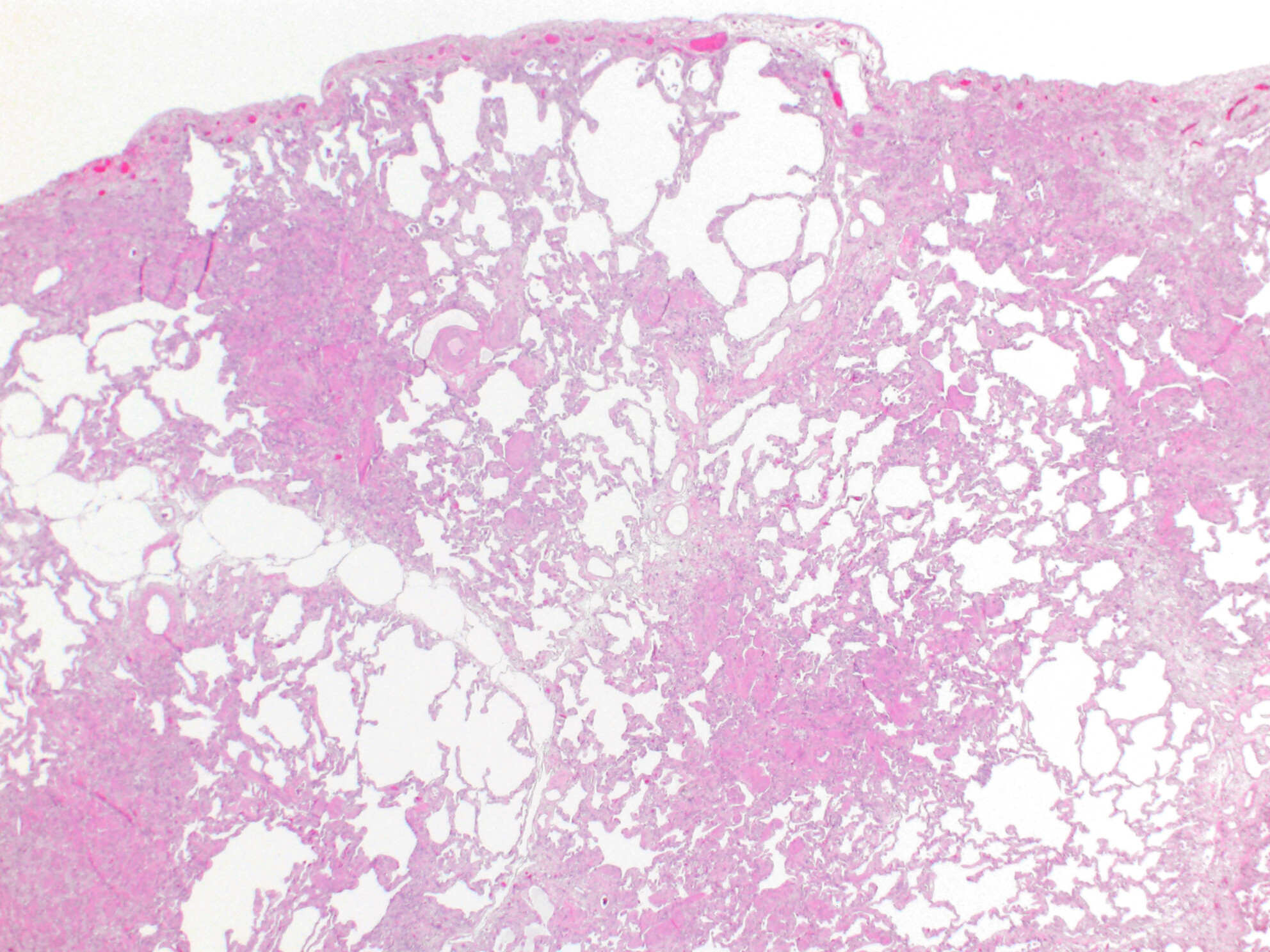
Clinically significant diffuse parenchymal lung disease arises in some patients with polymyalgia rheumatica, even in the absence of concomitant rheumatoid arthritis. Histopathological findings mirror other rheumatological disorders, and include unclassifiable fibrosis, non-specific interstitial pneumonia, organizing pneumonia, diffuse alveolar damage, and even diffuse alveolar haemorrhage with capillaritis.
Short Report
Anal squamous cell carcinoma with mucinous microcysts represents anal gland duct differentiation
- Version of Record online: 20 June 2025
Original Article
Standardizing the histopathological diagnosis of adenomyosis: an international Delphi consensus
- Version of Record online: 20 June 2025

This study establishes the first consensus-based guideline for the histopathological diagnosis of adenomyosis. Developed through an international, modified Delphi method, the framework provides standardized criteria for diagnosing adenomyosis, offering clear guidance to improve diagnostic consistency and accuracy in the assessment of hysterectomy specimens.
Assessment and classification of sex cord-stromal tumours of the testis: recommendations from the testicular sex cord-stromal tumour (TESST) group, an Expert Panel of the Genitourinary Pathology Society (GUPS) and International Society of Urological Pathology (ISUP)
- Version of Record online: 18 June 2025
Review
Practical implementation of AI in a non-academic, non-commercial Pathology laboratory: Real world experience and lessons learned
- Version of Record online: 17 June 2025
Correspondence
Sarcoma harbouring CEP170::RAD51B fusion: a case report emphasizing diagnostic caution in low-read, pseudogene-associated rearrangements
- Version of Record online: 17 June 2025
Short Report
Methylation analysis as a diagnostic tool for sweat gland tumours classification with emphasis on the distinction between digital papillary adenocarcinoma and mimickers
- Version of Record online: 10 June 2025
Original Article
Genetic correlates of malignancy in TFE3-rearranged PEComa: a series of 14 cases
- Version of Record online: 03 June 2025
Correspondence
Comment on ‘The evolving molecular characterization, histological criteria and nomenclature of adenoid ameloblastoma as a World Health Organization tumour type’
- Version of Record online: 27 May 2025
Lesson of the Month
Duodenal neuroendocrine tumours masquerading as peptic duodenitis, crushed lymphoid aggregates and prominent Brunner glands: some diagnostic pitfalls
- Version of Record online: 27 April 2025
Review
The future is now: advancing p53 immunohistochemistry in Barrett's oesophagus and its implication for the everyday pathologist
- Version of Record online: 13 April 2025
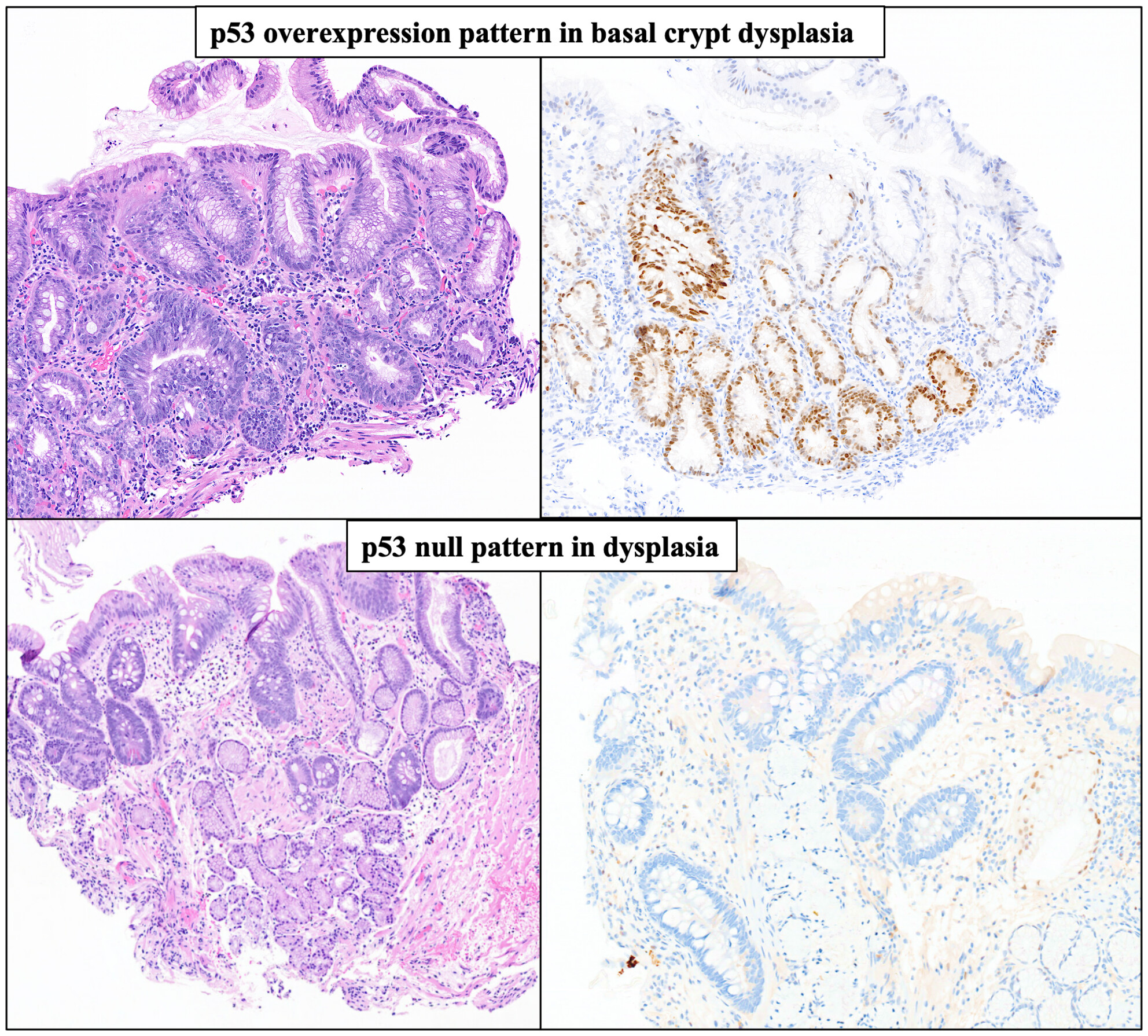
p53 immunohistochemistry (IHC) supports the diagnosis of dysplasia in Barrett's oesophagus (BE). While there is a vast amount of literature on this topic, there are no established criteria for what constitutes an abnormal p53 IHC result in BE. Our review provides evidence for a clinically friendly reproducible criterion.
Original Article
Clinicopathological and immunophenotypical characterisation of lymphocytic oesophagitis in adults with Crohn's disease
- Version of Record online: 13 April 2025
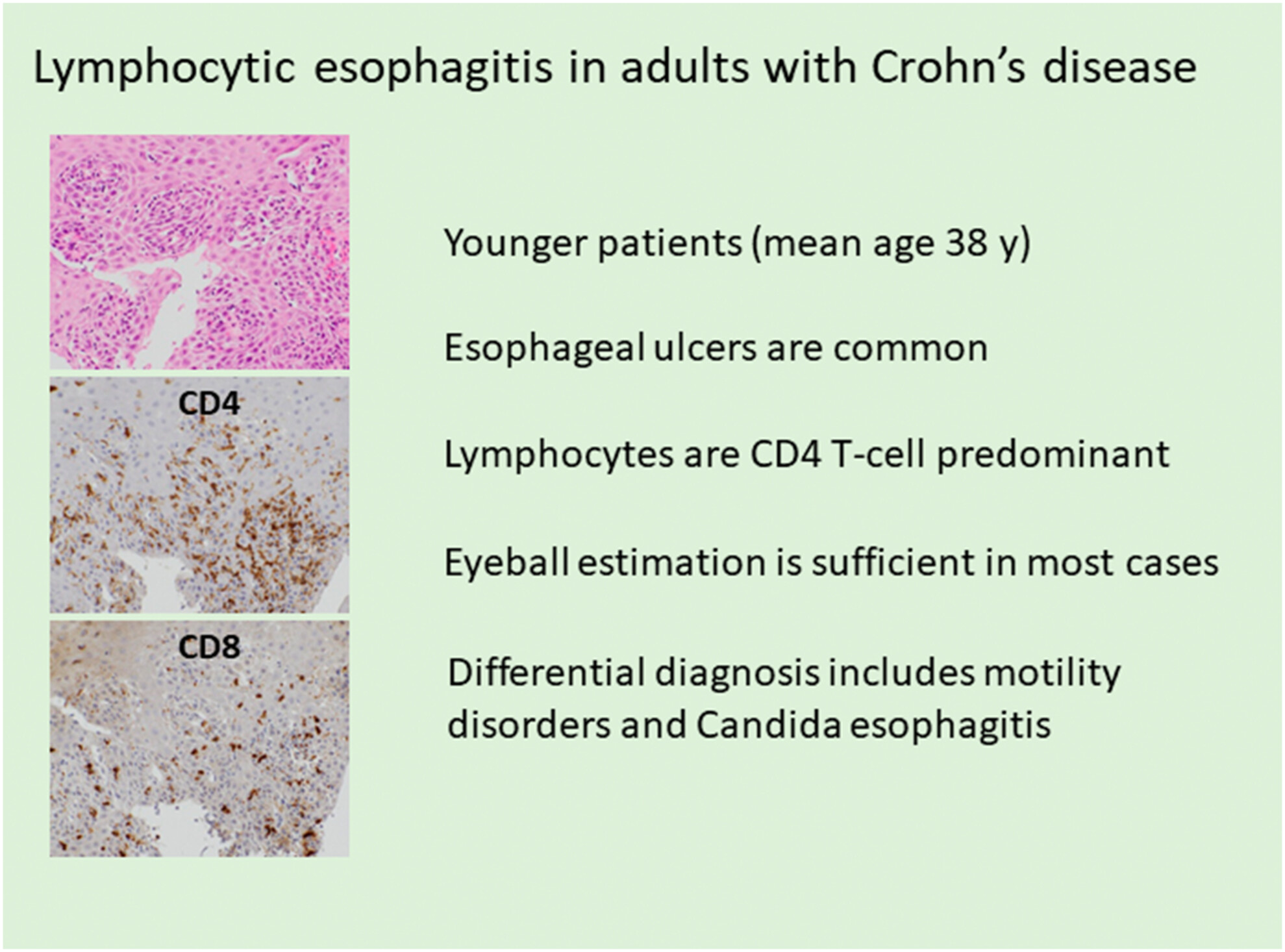
Lymphocytic oesophagitis in adults with Crohn's disease is characterised by younger age, frequent oesophageal ulcers and a CD4 T cell-predominant lymphocytic infiltrate. In most cases, an eyeball estimation is sufficient to determine the predominant T cell subclass. The differential diagnosis includes motility disorders and candida oesophagitis as potential aetiologies.
Expanding the use of T cell receptor beta constant 1 immunohistochemistry in formalin-fixed paraffin-embedded tissues in assessing T cell clonality in mature and immature T cell neoplasms
- Version of Record online: 04 April 2025

Allelic exclusion of T cell receptor beta constant chains (TRBC) ensures restricted expression of TRBC1 or TRBC2 in T cells. The use of TRBC1, in conjunction with CD3, immunohistochemical studies can assess T cell clonality in FFPE specimens, including decalcified materials. This method can be readily incorporated into routine pathology workflow in assessing mature and immature T cell neoplasms.
Predictors of neoplastic progression in gastroesophageal lesions indefinite for dysplasia
- Version of Record online: 25 March 2025
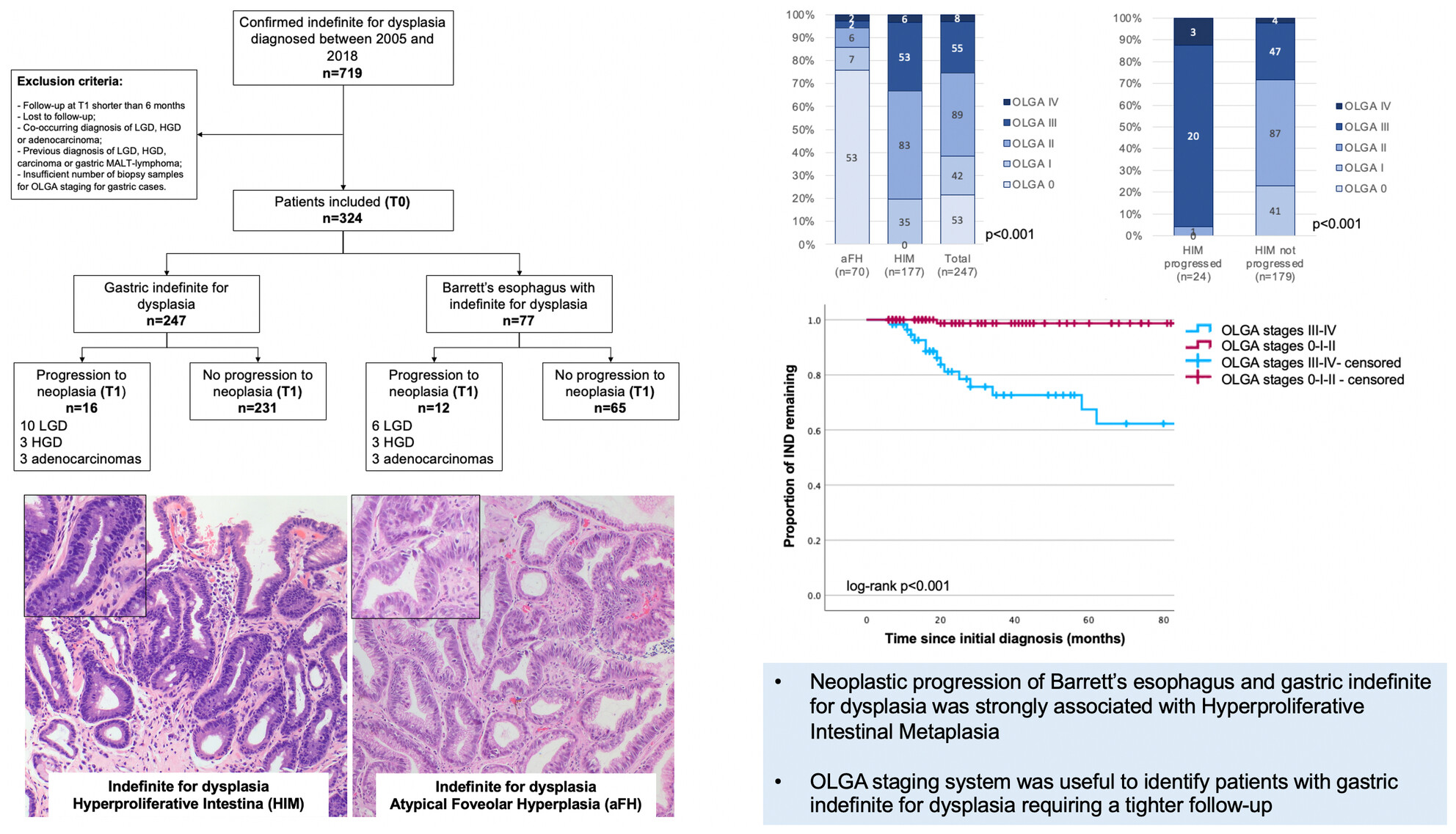
It is crucial to identify markers of neoplastic progression for risk stratification in gastroesophageal indefinite for dysplasia cases. Neoplastic progression was strongly associated with hyperproliferative intestinal metaplasia type and, in the gastric setting, OLGA staging system resulted useful to identify patients requiring a tighter follow-up.
RAF1-rearranged spindle cell neoplasm: a clinicopathological and molecular genetic study of six cases with review of the literature
- Version of Record online: 25 March 2025
Primary cutaneous NUT adnexal carcinoma: morphologic, genetic and methylation analysis of seven new cases with comparison to extracutaneous NUT carcinoma and NUTM1-rearranged porocarcinoma
- Version of Record online: 24 March 2025
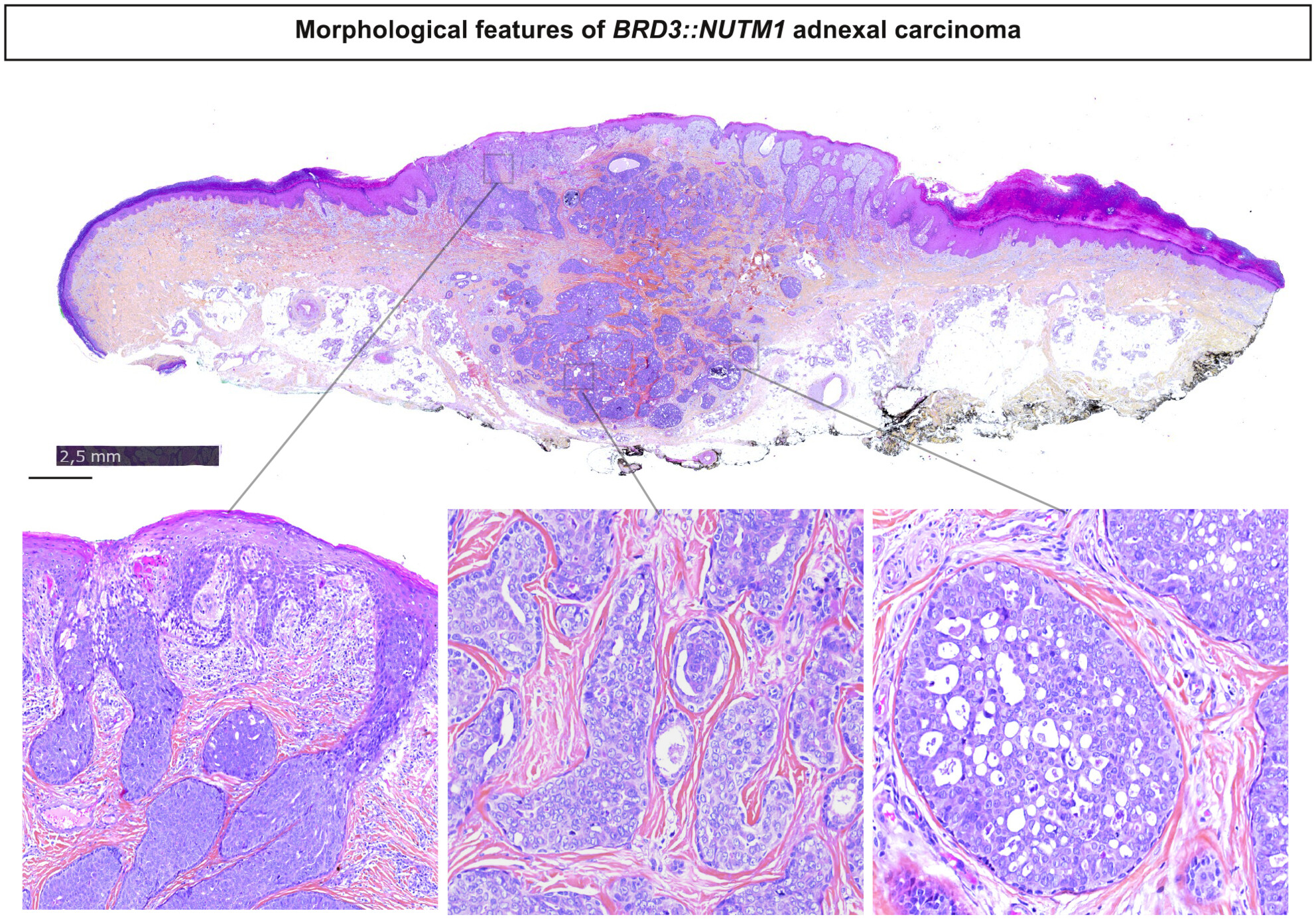
Microscopic features of a NUTM1 adnexal carcinoma magnification. This neoplasm consisted of large, poorly demarcated tumors, sometimes ulcerated infiltrated the dermis and subcutaneous tissue (HPS ×10). The lesions were organized in strands, cords and larger solid nests of poorly differentiated cells characterized by enlarged, irregular nuclei (HPS ×20).
HIV-negative primary effusion lymphoma: a series of seven cases
- Version of Record online: 19 March 2025
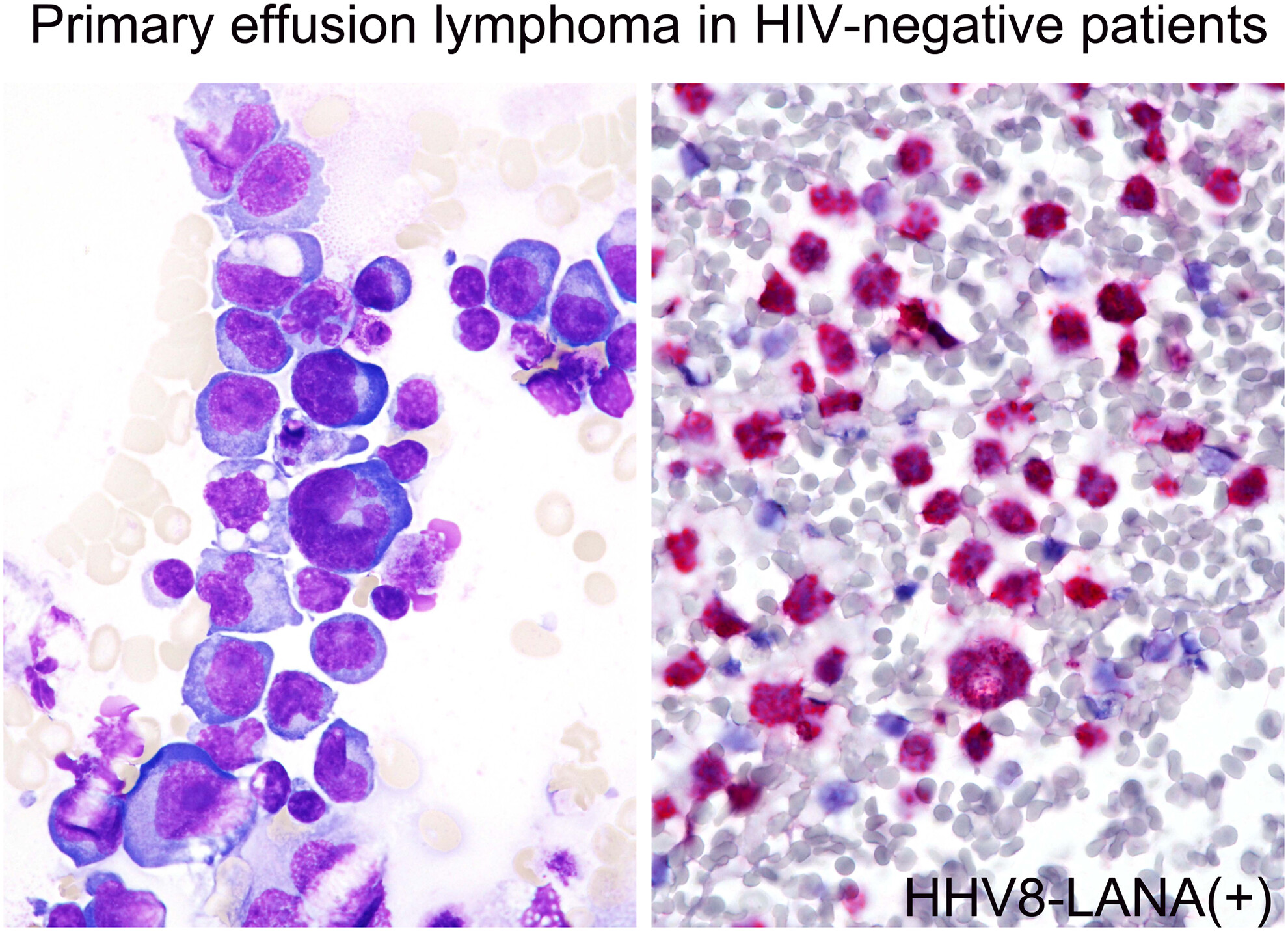
PEL can arise in immunocompetent, older patients, mainly in men, probably related to physiological immunodeficiency associated with ageing, and behaves aggressively. These neoplasms are similar to their HIV-positive counterparts with anaplastic cytomorphology, HHV8 latent infection and a plasmablastic immunophenotype.
Inflammatory bowel disease-associated serrated lesions with dysplasia are frequently associated with advanced neoplasia: supporting a unified classification approach
- Version of Record online: 19 March 2025

IBD-associated serrated lesions with dysplasia are categorized into three subtypes: TSA-like dysplasia, SSL-like dysplasia, and serrated dysplasia, not otherwise specified. Serrated dysplasia, regardless of subtype, was associated with high rates of advanced neoplasia during follow-up, suggesting that these lesions could be combined into one diagnostic category, such as serrated dysplasia.
Interobserver reproducibility of a hybrid three-tier grading system of papillary nonmuscle invasive urothelial carcinoma: an international Uropathology study
- Version of Record online: 09 March 2025
Review
Data set for reporting of paediatric rhabdomyosarcoma: recommendations from the International Collaboration on Cancer Reporting (ICCR)
- Version of Record online: 25 February 2025
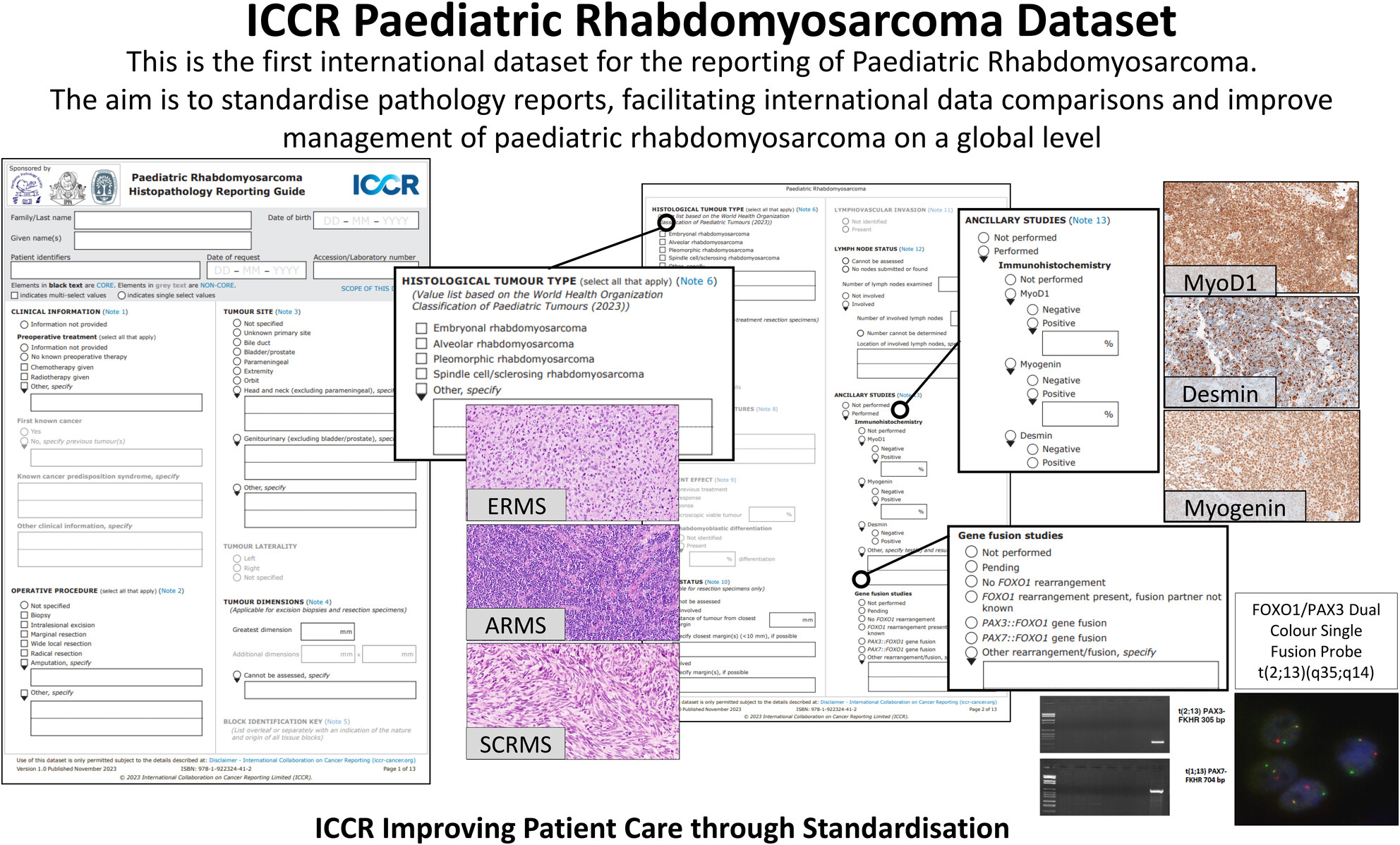
In this article, we provide the International Collaboration on Cancer Reporting (ICCR) process for the development of the first international paediatric RMS data set for the reporting of biopsy and resection specimens. The international data set for the reporting of paediatric RMS aims to promote standardised, high-quality reporting and supports uniform data collection, which is critical for clinical data comparison on a global level, ultimately improving patient outcome.
Data set for reporting of peripheral neuroblastic tumours: recommendations from the international collaboration on cancer reporting (ICCR)
- Version of Record online: 24 February 2025
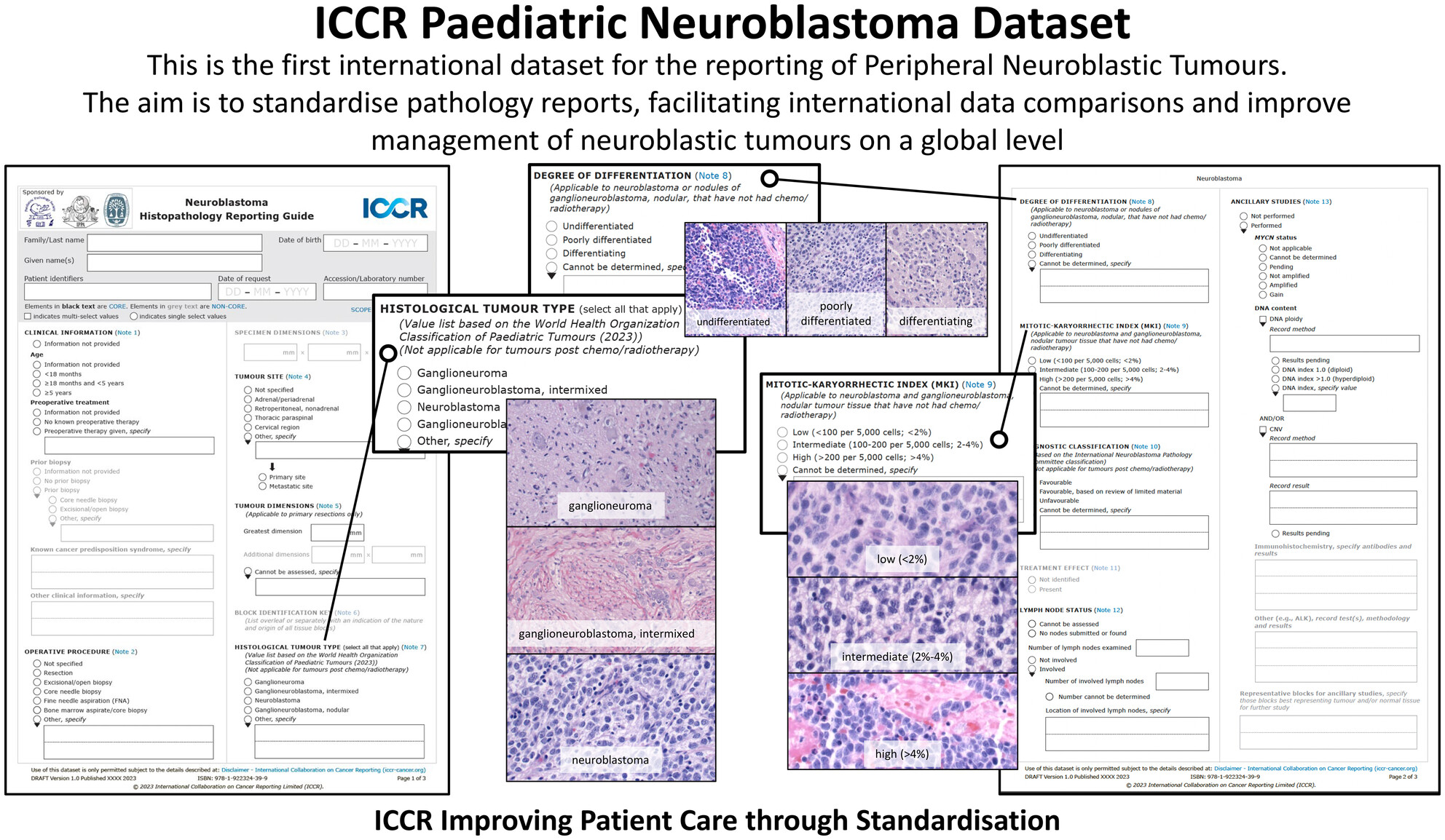
This is the first international data set for the reporting of Peripheral Neuroblastic Tumours produced by the International Collaboration on Cancer Reporting (ICCR). The aim is to standardise pathology reports, facilitating international data comparisons and improve management of neuroblastic tumours on a global level.
The puzzling Spitz tumours: is artificial intelligence the key to their understanding?
- Version of Record online: 20 February 2025
Pitfalls during histological assessment in locally resected pT1 colorectal cancer
- Version of Record online: 12 February 2025

This paper describes the most commonly encountered and clinically significant difficulties in the histological assessment of risk factors for regional lymph node metastases in locally resected early (i.e. pT1) colorectal cancer (CRC). These are illustrated using four examples that were received by our department during routine diagnostic practice.




